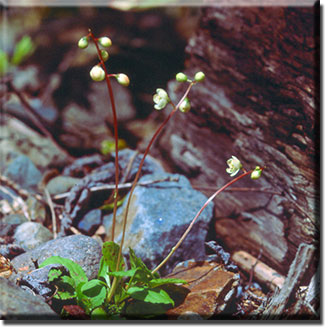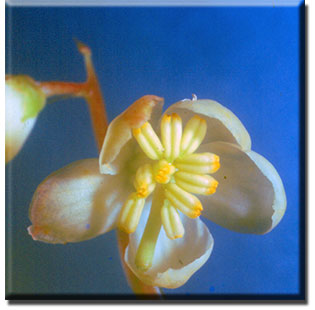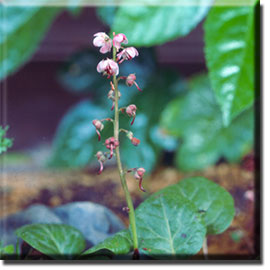Pyrola
When we look at a parasitic flowering plant, we often wonder what the closest nonparasitic relative might be. In the case of the monotropoids (Snow Plant, Indian Pipe, etc), the nonparasitic relatives appear to be the Pyrola or wintergreen family (Chimaphila, Moneses, Orthilia, Pyrola). Sometimes both the wintergreens and the monotropoids are placed in two different families, but even if they are, everyone seems to agree that they are very close to the heath family (Ericaceae), which includes blueberries, cranberries, azaleas, and rhododendrons. This picture shows Pyrola japonica in the Japanese Alps.
The flower of Pyrola japonica has the same number of parts as the flowers of the monotropoids: five petals and ten stamens show in this picture. A plant of Pyrola incarnata on the floor of a forest in the Japanese Alps. Pyrola is called wintergreen because the leaves stay green throughout the winter. Many species have leaves that, when crushed, give off a scent that we call oil of wintergreen. The Pyrola family grows in mostly shady conditions in cool forests of the northern hemiphere. A flower of Pyrola incarnata. The petals are pinkish and curving. Above, the dark orange anthers, with brown tips that have holes through which pollen grains are shed. Pointing downward in this picture is the style, the tip of which, the stigma, collects the pollen. Because there is a space between the anther tips and the stigma, this flower is not likely to be pollinated by its own pollen, but rather tends to be pollinated by pollen from another flower. An insect that has visited another flower of the Pyrola has a chance, by brushing against the sticky stigma, to transfer pollen from that flower on the stigma of this flower.
|







